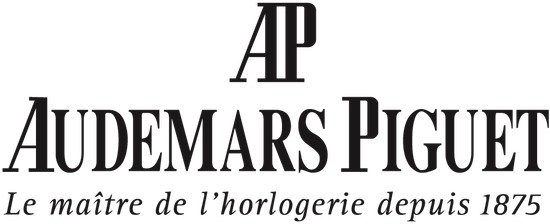
Audemars Piguet (pronounced Oh-de-mar Pi-gay), often referred to by its abbreviation AP, is a luxury Swiss Watch manufacture founded by two families from dynasties of inventors – the Audemars Family and the Piguet Family. Jules Louis Audemars (1851 – 1918) and Edward Auguste Piguet (1853 – 1919) both founded Audemars, Piguet & Cie in 1875 with the intention of crafting watches with complex mechanisms, and since 1882, members of both families have been running and retaining ownership of the company. Jasmine Audemars remain the Chairwoman of the Board of Directors today.
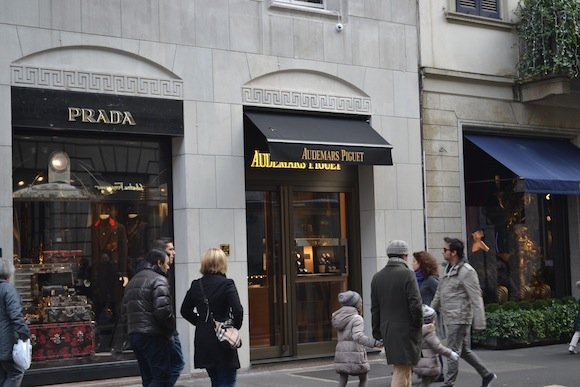
and was greeted by the boutique’s very friendly assistants.
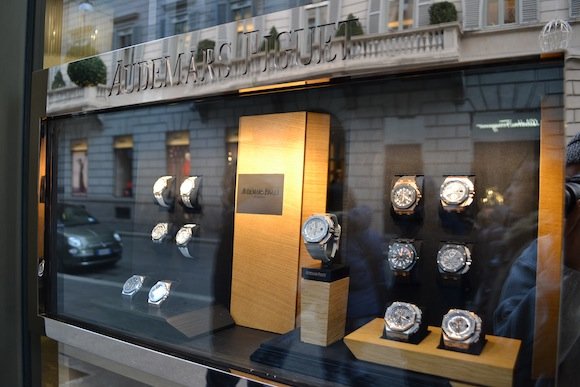
just behind the storefront’s display window.
– Devon Buy
When I began appreciating watches about a decade ago, I never gave Audemars Piguet watches a second look – perhaps it was the bulky case, and maybe I didn’t find the sporty front appealing. Things changed in the last two years when I started giving Audemars Piguet watches closer scrutiny, to the extent of trying them out at the AP Boutique and watch shops – they look better on the wrist than on the display case. Call it acquired taste, and if I had six figures to spend on a watch today, it would definitely be an Audemars Piguet – my pick would be the Royal Oak Offshore Chronograph in forged carbon case (also presented below). Or maybe even the Sébastien Buemi. It is something I would give an arm and a leg to own. Not literally though. I usually tell people these days – in order to witness its true beauty, it has to be admired on the wrist!
Presented below are some of my favourite models from AP’s collection.
|
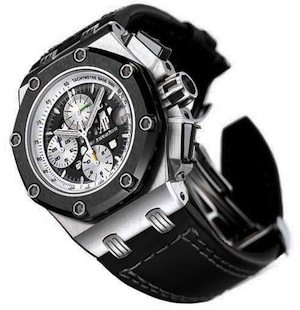
|
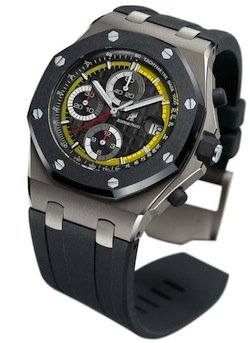
|
|
|
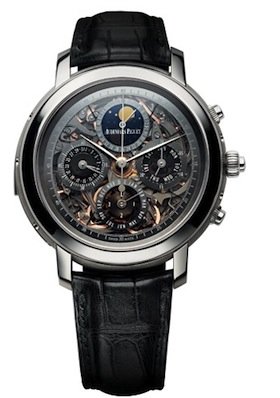 |
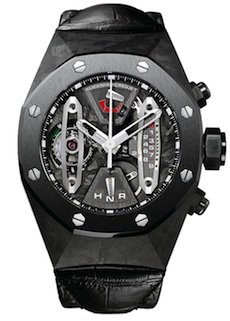 |
|
Seen the Back of an AP lately…?
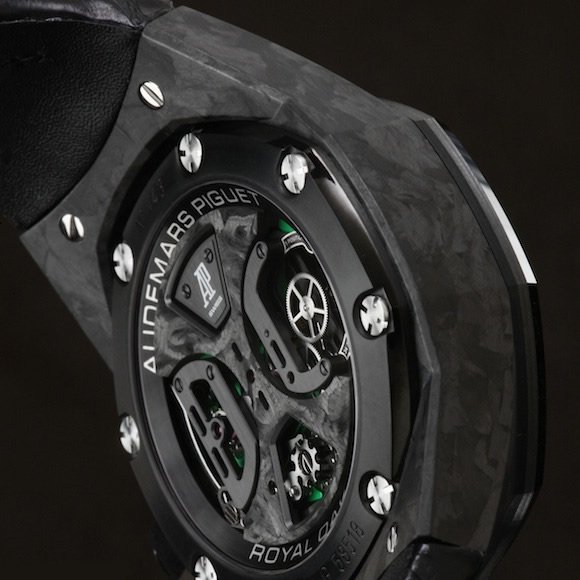
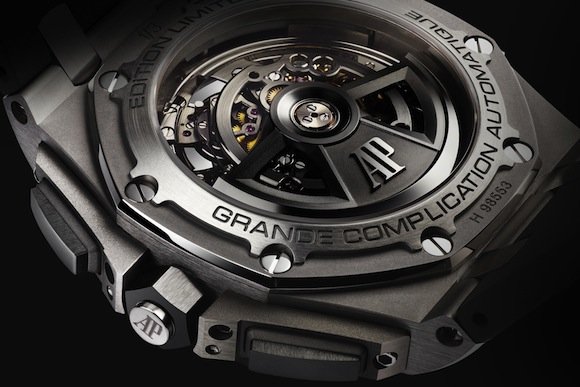
The Series – The Collection
ROYAL OAK
ROYAL OAK OFFSHORE
MILLENARY
JULES AUDEMARS
TRADITION
A Little Bit of History
THE AUDEMARS FAMILY |
THE PIGUET FAMILY |
|---|---|
| André Hodemart settled in Geneva in 1558 before founding the Audemars dynasty in the Vallée de Joux. The branch that specifically interests us here appears to begin with Elisée Audemars (1779 – 1850). In association with his brother Louis Benjamin Audemars (1782 – 1833), he headed the watch company bearing the same name. Elisée’s son, François Louis (Loyal) Audemars, was a farmer who tended the fields and raised cattle in summer. The eldest of six children, Jules Louis (1851 – 1918), co-founded the Manufacture Audemars Piguet in 1875. The three following generations remained at the head of the company: his son Paul Louis (1881 – 1969) from 1918 to 1959, followed by the latter’s son Jacques Louis (1901 – 2002) from 1959 to 1992, and finally Jacques Louis’ daughter Jasmine (1941) who has been Chairwoman of the Board of Directors since 1992. | Of all the families established in the Vallée de Joux for several centuries, the Piguets are probably the most ancient. As with the Audemars, the Piguets are watchmakers from generation to generation. The son of Eugène Piguet, Edward Auguste (1853 – 1919) became a master watchmaker, and in 1875 co-founded Audemars, Piguet & Cie with Jules Louis Audemars. His son, Paul Edward (1890 – 1979) jointly headed the company between 1919 and 1962. One of his daughters, Paulette Gabrielle (1921 – 2003), who was associate secretary general of the World Alliance of Reformed Churches in Geneva, took his place on the Board of Directors from 1979 to 2003, when she was replaced by her nephew Olivier Franck Audemars (1959). |
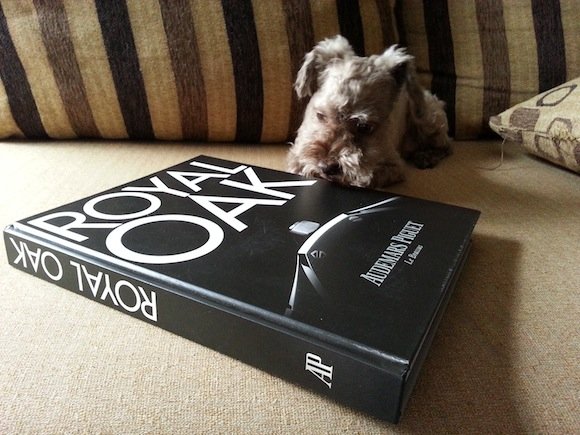
Chronology of Historical Events
HIDE THIS SECTION
THE “FOUNDING” YEARS
| 1875 | – | The two watchmakers decide to produce and sell watches finished by them. Jules Louis Audemars takes charge of the technical side of the business, while Edward Auguste Piguet is responsible for the commercial and financial aspects. |
|---|---|---|
| 1881 | – | Dec 17. The two associates officialise their partnership before a notary. Edward Auguste’s contribution to the starting assets is 10,000 francs, and that of Jules Louis consists of 18 finished complicated movements. The two associates are to share the company profits and losses, and are both entitled to a fixed salary renegoatiable after three years. |
| 1882 | – | Dec 6. The company is officially registered with the Administration of the Office technique d’Edition et de Publicité(Technical Office for Publishing and Advertising) in Bern. |
| 1885 | – | To meet growing demand, Audemars Piguet opens a subsidiary at 13, Place du Molard (Geneva), which enables it to place the inscription “Genève” on its watch dials. The company will maintain an office in Geneva until 1975. |
| 1886 – 1888 | – | The company specialises in complete watches with complex mechanisms, but the worldwide sale of these watches is achieved via a network of agents established on the most important markets at the time: England, France, Germany, the United States and Argentina. |
THE “DEVELOPMENT” YEARS
| 1889 | – | Audemars Piguet presents complex pocket-watch models at the Universal Exposition in Paris. The success encountered enables the company to establish representatives on the five above-mentioned key markets. |
|---|---|---|
| 1907 | – | For the first time, the Board of Directors is no longer exclusively composed of members of the two founding families. October. The 1907 American bank panic sparks a crisis entailing repercussions that notably affect the Swiss watch industry. |
| 1911 | – | The founder’s son Paul Louis Audemars is appointed to the Board. |
THE “WAR” YEARS
| 1914 | – | 1st board meeting. The two founders lend the factory CHF 12,500 each to resolve the cash-flow issues. February 18th. Paul Edward Piguet requests a salary raise, which the Board grants him only in part. Favouritism is not the company rule. A watchmaking workshop, which is not a boutique, is opened at no. 16, Rue du Mont-Blanc in Geneva. 2nd board meeting. Out of the 23 workers in the factory, twelve have been called up. 3rd board meeting. The state of orders is disastrous. The management wishes to avoid losing its highly skilled workforce and the employees want to keep their jobs. A compromise is found by means of a four-day working week and a 20% salary cut. |
|---|---|---|
| 1917 | – | March 31st. 27-year-old Paul Edward Piguet is appointed Managing Director. |
| 1918 | – | Edward Auguste Piguet becomes Chairman of the Board. October 17th. Jules Louis Audemars dies, and his son Paul Louis takes his place as Technical Director. |
| 1919 | – | Edward Auguste Piguet also dies. His son Paul Edward succeeds him as Sales Director. |
THE “CONSOLIDATION” YEARS
| 1920 | – | July 11th – 25th. The company takes part in the Foire suisse d’horlogerie, bijouterie et branches annexes (Swiss watch, jewellery and related industries fair) in Geneva. The models, including a model housing 15 complications and depicting the 315 stars visible in the night sky above London, are acclaimed by the press. |
|---|---|---|
| 1921 | – | January 1st. The working week is fixed at eight hours a day, six days a week. February 11th. Monthly salaries are reduced by 5%. May. New 15% drop in monthly salaries. December 30th. The week is cut to 40 hours. |
| 1931 | – | Paul Louis Audemars suggests setting up in Geneva a representative office which would also serve as a point of sales. |
| 1933 | – | Jacques Louis Audemars, grandson of the founder, joins the company as an apprentice. |
| 1935 | – | The company is in grave danger. Paul Louis Audemars asks the cantonal authorities to exonerate it from taxes and suggests creating two cheap brands named Audiguet and APCO. |
| 1936 | – | Paul Edward Piguet requests a grant from the Canton of Vaud Chamber of Commerce. |
THE “WAR” YEARS
| 1939 | – | January 9th. Jacques Louis Audemars is appointed Deputy Managing Director at the age of 29. The company has just ten workers and the working week has been reduced to 32 hours. June 13th. The company is granted a CHF 15,000 ten-year loan and, in order to maintain its workforce, associates with the Geneva-based Universal Watches company which produced cheap chronographs. |
|---|---|---|
| 1940 | – | June 26th. Short-time work is introduced. An order for 90 watches from Tavannes Watch Co. and Universal Genève saves the company from bankruptcy. |
| 1941 | – | The 48-hour working week is reintroduced. |
| 1942 | – | The Italian government prohibits the importation of gold watches. Accordingly, thirty years before the Royal Oak, Audemars Piguet makes steel watches. |
| 1943 | – | Hand-wound Calibre VZSS 13”’ (30 mm in diameter) is interpreted in different versions: central seconds (VZSSC), seconds at 6 o’clock (VZSS), and seconds at 9 o’clock (VZAS). It is still one of the finest ever Haute Horlogerie movements. |
| 1945 | – | Audemars Piguet is granted a CHF 170,000 loan from the Société de Banque Suisse. May 1st. Georges Golay is hired as an accountant. |
THE “RECONSTRUCTION” YEARS
| 1946 | – | Audemars Piguet launches a first, the world’s thinnest hand-wound movement (1.64 mm): Calibre 9”’ ML; which powers wristwatches. |
|---|---|---|
| 1947 | – | Georges Golay suggests a restructuring of the company. Creation of two so-called standard, meaning less expensive brands – APCO and Audiguet – and progressive modernisation of production methods. |
| 1949 | – | First participation in the Foire suisse d’échantillons (Swiss Sample Fair) in Basle (future Baselworld). The company closes down its New York branch. Carlo Sarzano, who founded Sarcar in 1947, becomes an Audemars Piguet agent for Italy and then Spain. The inscription “& Co.” appearing on the dials vanishes and the numbering system is modified. The Audiguet and APCO watches are not selling. |
| 1951 | – | Business relations are intensified between Audemars Piguet and Jaeger LeCoultre. A watchmaker is hired to make Grande Complication models in Geneva, which enables the company to place the inscription “Audemars Piguet Genève” on its dials. |
| 1953 | – | Launch of a production programme encompassing 1,580 movements. The 1946 extra-thin 9”’ ML movement is replaced by Calibre 2003 featuring the same dimensions. |
| 1955 | – | The economic recovery is well under way, since the programme foresees the production of 1,920 watches. The main markets are Switzerland (1), the United States (2), Italy (3) and Germany (4). |
| 1958 | – | Financial stakeholdings shared between the families of the various manufacturers are commonplace during this period. The two main directors of Jaeger LeCoultre – Jules-César Savary and Roger LeCoultre – both sit on the Board of Audemars Piguet. |
| 1959 | – | The technical management of the company is entrusted to Jacques Louis Audemars. |
THE “CHANGE” YEARS
| 1960s | – | All the new calibres have made their appearance. For men’s models: the 2001 (9”’ 9/12, semi-thin hand-wound), the 2003 (9”’, extra-thin hand-wound), 2070 (13”’, selfwinding) and its variations, 2071 (central seconds) and 2072 (calendar). For ladies’ models: the 2426 (hand-wound from beneath), 2050 (hand-wound) and 2005 (baguette type). The ébauches are made in larger quantities. Four “older” calibres are maintained: the 13”’ VZSS (1943), the 9/10”’ RS (round, 1951), the 13”’ VZSSC (1952), and the 10”’ TS (tonneau shape, 1953). |
|---|---|---|
| 1962 | – | Georges Golay is appointed Sales Director, thereby replacing Paul Edward Piguet. |
| 1967 | – | The mechanical selfwinding Calibre 2120 is a world first: it is – and remains to this day – the thinnest in the world in its category (2.45 mm). Twenty-two years after joining the company, Georges Golay is appointed Managing Director. |
THE “REVOLUTION” YEARS
| 1971 | – | An after-sales service department independent from production is set up, resulting in a major change in the corporate philosophy. |
|---|---|---|
| 1972 | – | April 15th. At the request of the Italian and Swiss markets, the company launches the Royal Oak. In due course, this model is to revolutionise the world of Haute Horlogerie thanks to the introduction of a “low-end” material – steel – and gain the company leadership status. |
| 1973 | – | The Manufacture Audemars Piguet comprises of a 70-strong staff and annual production amounts to 8,000 watches. |
| 1975 | – | 100th anniversary of the Manufacture. Stephen Urquhart is hired as Sales Director. The Geneva sales office is closed down. |
| 1978 | – | The selfwinding Perpetual Calendar model on leather strap emerges from the Audemars Piguet Technical Department, based on the extra-thin selfwinding Calibre 2120, the world’s thinnest movement. It proves an immediate success and, in the midst of the quartz period, Audemars Piguet thereby revives worldwide enthusiasm for watches with complex mechanisms. |
| 1985 | – | Swiss sailor Pierre Fehlmann wins the Whitbread Trophy. For the first time in its history, Audemars Piguet is one of the sponsors. Georges-Henri Meylan is hired as Production Manager. |
| 1986 | – | First series-made extra-thin selfwinding tourbillon model (also the smallest in the world at 7.2 mm in diameter) on a leather strap. The caseback serves as the movement base. |
| 1987 | – | October. Georges Golay dies after 40 years with the company. Stephen Urquhart and Georges-Henri Meylan are appointed as joint Managing Directors. Soon afterwards, Florence Piguet takes the head of the Financial Department. |
| 1989 | – | Golfer Nick Faldo becomes the first brand ambassador. |
THE “NOVELTY” YEARS
| 1990 | – | Dual Time, the first selfwinding watch to display two time zones with a single movement. |
|---|---|---|
| 1991 | – | First selfwinding tourbillon with power reserve and date. The Star Wheel is also launched. It is based on an Audemars Piguet system enabling read-off of the hours and minutes by means of a display on sapphire discs. |
| 1992 | – | Triple Complication on leather strap and Minute Repeater with jumping hours. Jasmine Audemars becomes Chairwoman of the Board of Directors and of the newly created Audemars Piguet Foundation. |
| 1993 | – | Royal Oak Offshore. Inauguration of the Audemars Piguet Museum in the original Audemars Piguet family home dating from 1868. Opening of the first Audemars Piguet Boutique at 68, Rue du Rhône, in Geneva. |
| 1994 | – | A new world first: the Grande Sonnerie on leather strap with miniaturised movement. This model chimes the hours and quarters automatically or “in passing”, and also serves as a quarter repeater. |
| 1995 | – | Audemars Piguet celebrates its 120th anniversary. Launch of the minute repeater John Shaeffer, Millenary and Carnegie models. |
| 1996 | – | The Ladies’ Royal Oak Offshore is presented and Calibre 2003 (an evolution of 9”’ ML) celebrates its 50th anniversary. Chess World Champion Gary Kasparov becomes an ambassador of the brand which also launches its website. |
| 1998 | – | Stephen Urquhart leaves Audemars Piguet. |
| 1999 | – | Audemars Piguet restructures in order to produce its own movements. The Tradition d’Excellence line is inaugurated with the Jules Audemars Minute Repeater, Tourbillon and Split-Second Chronograph model in platinum. |
THE “SUCCESS” YEARS
| 2000 | – | May 17th. 125th anniversary of the Manufacture Audemars Piguet: the entire company sets off for Paris by the TGV high-speed train, directly from the Le Brassus railway station! |
|---|---|---|
| 2002 | – | For the 30th anniversary of the Royal Oak, the brand launches the Royal Oak Concept watch featuring a superlative range of features. |
| 2003 | – | March 2nd. Alinghi wins the 31st America’s Cup. Launch of the Royal Oak City of Sails. |
| 2005 | – | For its 130th anniversary, Audemars Piguet launches the selfwinding Calibre 3120 with direct-drive sweep seconds hand. |
| 2006 | – | The company continues opening boutiques around the world and launches a new lubricant-free escapement, fitted on the Tradition d’Excellence No5, which also features a double balance-spring. |
| 2007 | – | A second victory for Alinghi in the America’s Cup. Launch of the Royal Oak Offshore Team Alinghi Chronograph. |
| 2008 | – | Inauguration of the Manufacture des Forges. December 31st. Georges-Henri Meylan retires. |
| 2009 | – | January 1st. Philippe C. Merk is appointed the new CEO. |
| 2010 – 2011 | – | Audemars Piguet is 135 years old and has a personnel of 1,000 in Switzerland and abroad, 14 distribution subsidiaries, 19 boutiques and 3 production sites manufacturing 25,000 watches a year. |
| 2012 | – | The Royal Oak celebrates its 40th birthday with an Extra-Thin Tourbillon model. |
Handling Audemars Piguet Watches
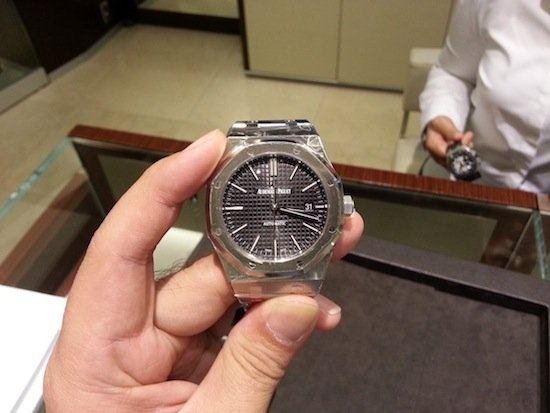
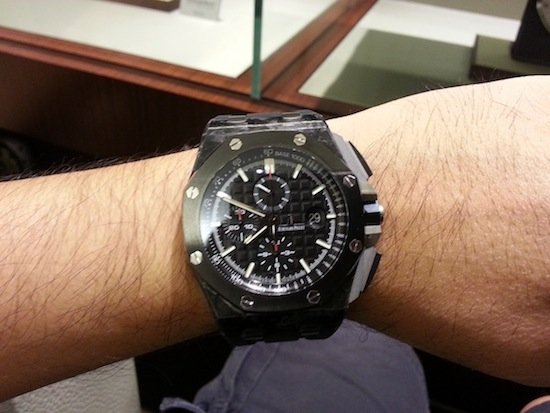
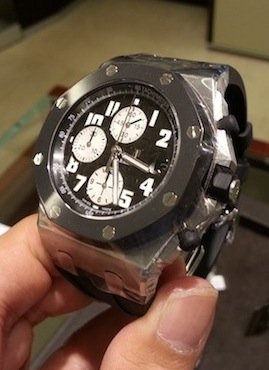
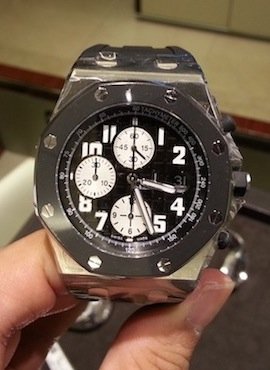
Méga Tapisserie dial.
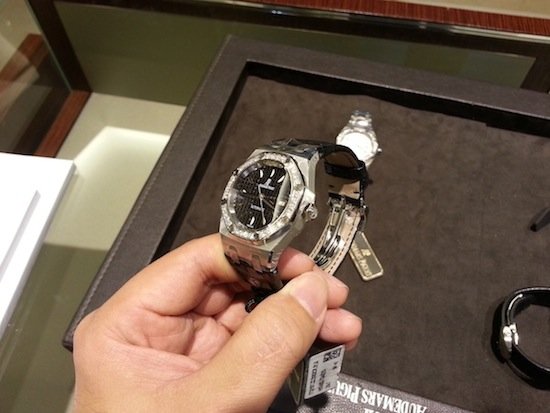
See where Audemars Piguet rank in the hierarchy of watch brands.

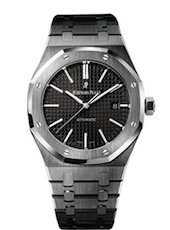
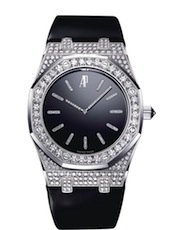
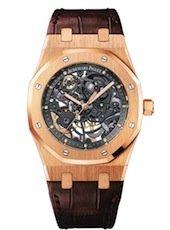
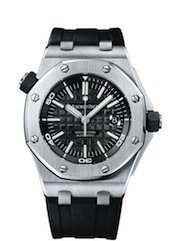
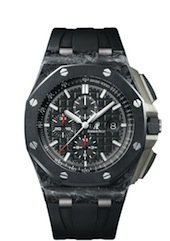
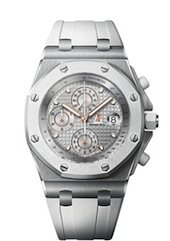
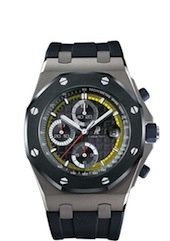
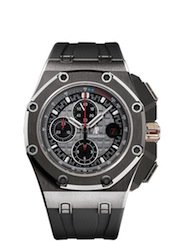
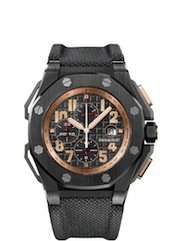
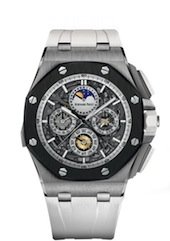
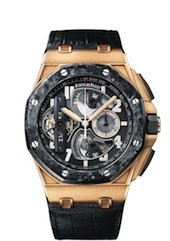
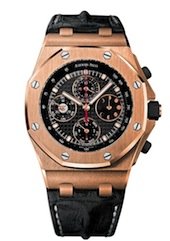
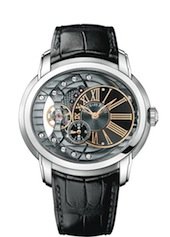
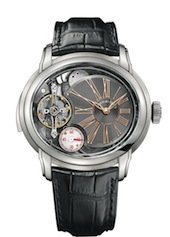
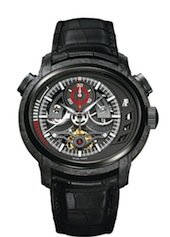
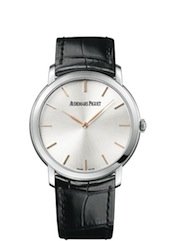
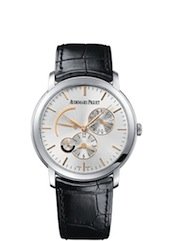
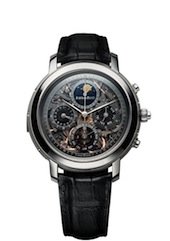
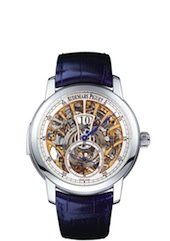
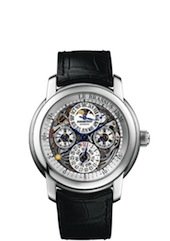
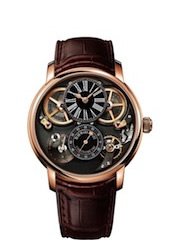
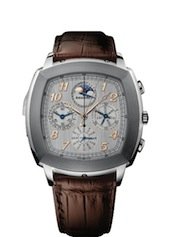
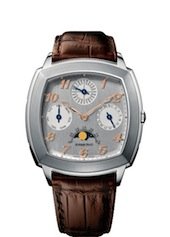
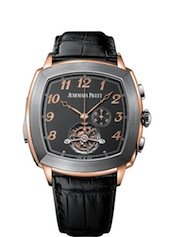
Very Nice :like: ……. :'(